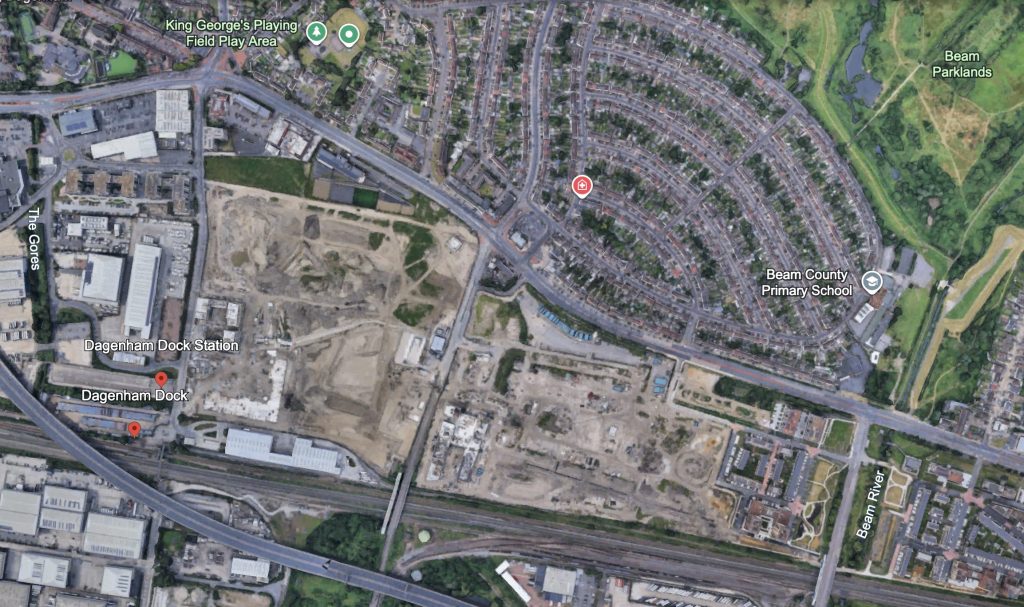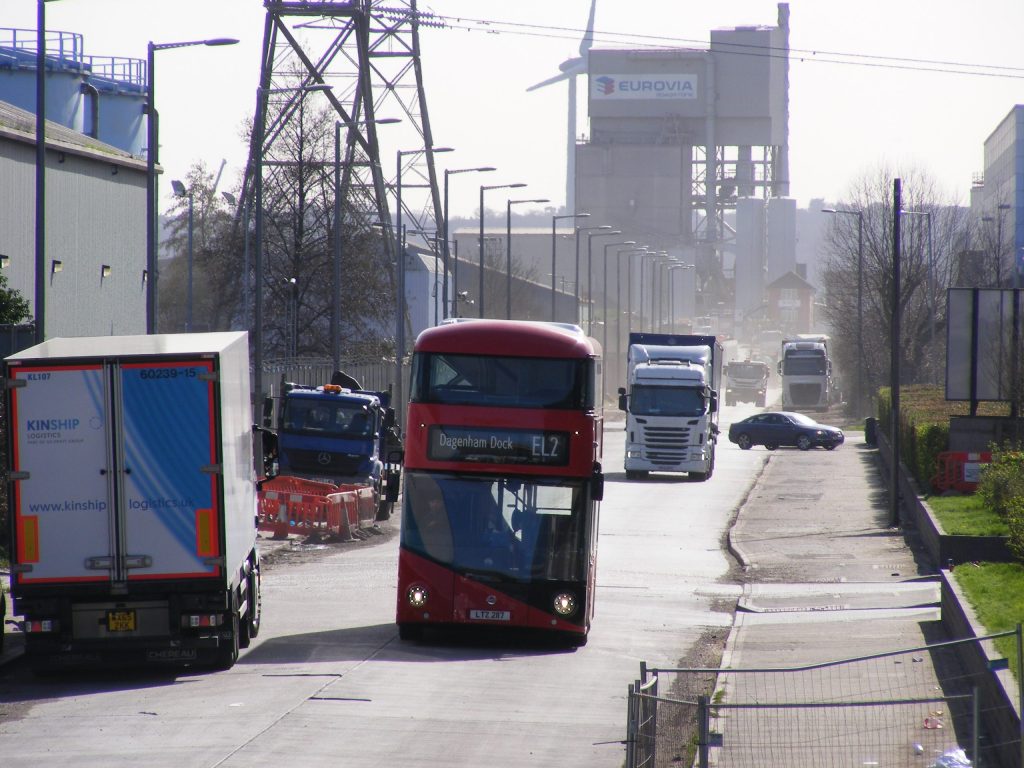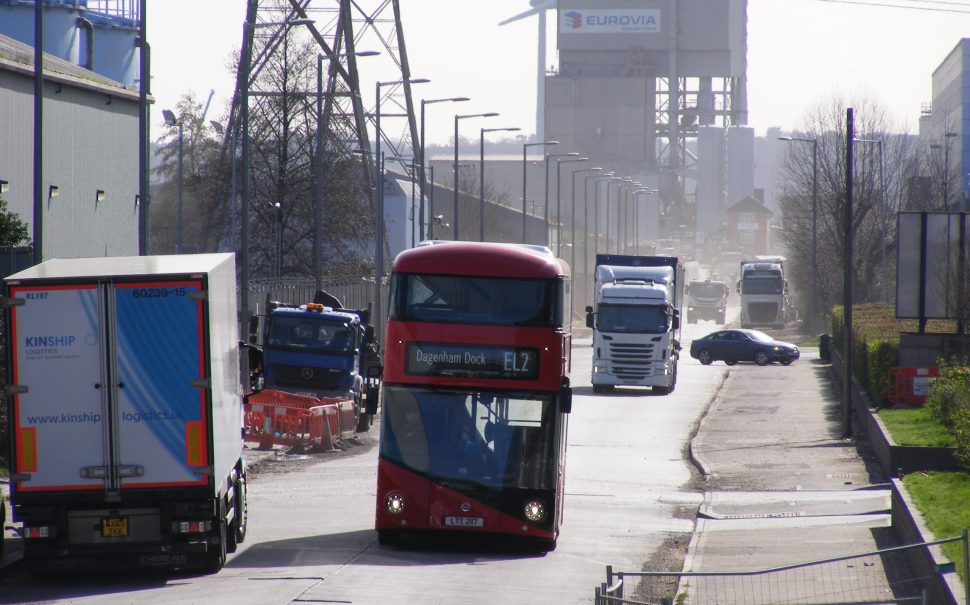Dagenham, once a booming site hosting the grounds for Ford motors, filled with locals having big dreams and aspirations for the future of their area, are now in a constant state of grievance over a scrapped development project.
Residents have expressed anger for the government and local authority failing to prioritise restoring the area to its former glory; instead authorities have allowed standards to slip, with Dagenham now being the fifth most deprived local authority in England.
Dagenham residents were once overcome with excitement following reports in 2022 by the City of London Corporation, when plans were approved for the relocation of two of London’s oldest meat and fish markets to a purpose-built site at Dagenham Dock.
Now, in 2025, residents face a constant sting of disappointments.
Plans for The Smithfeild, Billingsgate and NewSpitalfields markets ran into problems, and by November 2024, the City of London Corporation announced that it had voted to end its interest in relocating the markets to Dagenham Dock.

The move entailed a £1bn direct investment in the local economy, a state-of-the-art market complex, and two new transport links.
On top of this, the City of London Corporation’s press release in 2022 stated that the London Borough of Barking & Dagenham Council Leader, Darren Rodwell, publicly said: “The move will be transformational for the area, creating up to 2,700 jobs and bringing billions of pounds of investment.”
A March 2021 press release even claimed: “This co-located market could generate expenditure totalling c.£2.9bn across the UK economy each year supporting some 11,800 jobs.”
The new local jobs included at the site were to be in logistics, catering, warehousing, maintenance, and food education/training.
The City of London document said: “The new facilities will also incorporate an educational offer as well as potentially including a new training school, which will train future market traders and food workers within the borough.”
This ‘food school’ and training opportunities brought promises that residents, local businesses and young people of the borough who would all benefit from these opportunities alongside an improved and healthy food offer.
Two years later, it’s left with an empty 42-acre plot and unanswered questions.

The report of the project being scrapped came in November 2024, claiming that instead, funding will be used to provide financial support to the traders, enabling them to move to new locations of their choosing.
The City of London Corporation said: “This decision, made with full support from Traders after extensive consultation, reflects the City’s commitment to respecting these markets’ legacy while balancing tradition with progress.”
Sam H, an aggrieved Five Elms resident said: “The plans were discussed for a long time, with lots of positivity about the commercial premises being located on the A13 in LBBD.
“Transport would have included the Thames, as well as the A13 and rail, so there would have been environmental benefits of the location compared to others.
“However, it is the City of London Corporation which has pulled the plug and not only negatively impacted on the potential for LBBD and residents, but also those operating in the existing markets which are still planned to close after hundreds of years.”
Margaret Mullane, Dagenham and Rainham MP said: “I have to say, I felt really sad and hugely disappointed, because I saw the three markets coming as well as Beam Park station and thought everything in the south of the borough was coming together.
“And for me, these markets could have brought good, well-paid jobs and a future for the youth of the borough with very different jobs, trades and skills — it has left me feeling deeply disappointed.”
For residents and traders on the ground, this now means they have lost expected jobs and hopes for realistic, accessible employment for locals who often must commute long distances for low-pay work.
Young people were told there would be training and food education opportunities, pathways which have now disappeared.
Other fallout includes depleting local property values and development confidence, a lacking public perception of Barking and Dagenham as an investment location, and further developments for a proposed Beam Park Rail station and A13 upgrades, which were justified partially by the traffic to be generated by the markets, now facing further delays.
Lisa Joseph, Goodmayes resident said: “No doubt there will soon be planning permission for thousands of homes that the area doesn’t need, it needs jobs and infrastructure.”
Becontree resident Terence Taylor said: “An opportunity missed by the fat cats.
“Infrastructure; road; rail; river; air; what more do they need? They’ll be sorry.”
Smithfield and Billingsgate traders have mixed feelings over the move, as some eager to transform their business with improved access and facilities, but others opposed the relocation due to logistical costs and loss of central-London clientele.

The bottom line is, this has left hundreds of traders and suppliers in limbo, unsure whether they’ll now be asked to relocate elsewhere or invest in outdated premises.
The market scheme’s collapse reinforces a narrative of broken promises to East Londoners as the council praised the plan as proof of ‘London moving east.’
The scheme’s collapse raises questions about the borough’s influence and ability to secure major investment.
Vince Fitt, resident, said: “Honestly, would you move to Barking and Dagenham if you had the chance?
“The council seems more focused on fines than development, and the traffic is already terrible.
“It’d be amazing for the area, but we were promised TV/Film studios and Riverside projects.
“Does Labour really want this, or are they intimidated by the prospect of gentrification and new voters?”
Additionally there are plans in the works for Beam Park Rail station to be added onto the C2C line and received planning consent in 2019 but it has not yet opened, and isn’t expected to until 2028 at the earliest, due to delivery costs of materials and viability concerns.
These delays have had knock-on effects for other regeneration elements in Beam Park including homes, transport links and local jobs, leaving a major gap in the area’s regeneration infrastructure.
All of these promises were used in early PR and press coverage to market the project as part of a new transport-connected employment hub for East London.
But when the market’s relocation was scrapped, these linked infrastructure improvements effectively lost their main funding rationale, calling both the Beam Park station’s urgency and Dagenham Dock road/rail upgrades in to question.
East London is facing a wider regeneration crisis not only affecting Barking and Dagenham.

Stalled projects in Silvertown (Newham) part of large regeneration scheme, a £3.5 billion promise of 6,500 homes and 10,000 jobs but remains years behind expectations.
The area’s transport infrastructure has also led to controversy as the Silvertown Tunnel was supposed to support regeneration, but has been criticised as ill-timed and environmentally problematic.
After The City of London Corporation chose to end its interest in relocating the markets to Dagenham, their public statement said: “We will now work closely with Barking & Dagenham Council to unlock the Dagenham Dock site, with the aim of delivering regeneration and high-quality jobs for local people”.
While the site remains in the ownership or control of the City of London Corporation, how and when it will be marketed, sold or developed — and under what terms — is not yet defined publicly.
So what now for Barking and Dagenham?
The London Borough of Barking and Dagenham Press Team said: “The site is in a strategic industrial location and will be used for new employment uses.
“The City of London remediated the site and got it ready for development — it is therefore one of the largest sites available in London for new employment uses.”
The Council is also working with Thames Freeport and their consultants on a masterplan and investment strategy looking at how the potential of the wider area, including this site, can be maximised to attract inward investment and new employment opportunities.
The Council did secure £1m from the City of London as part of the Section 106 agreement for food related activity and we are implementing that programme which can be viewed here: Food – B&D Opportunities.
Featured Image Credit: Sludge G via flickr.com





Join the discussion